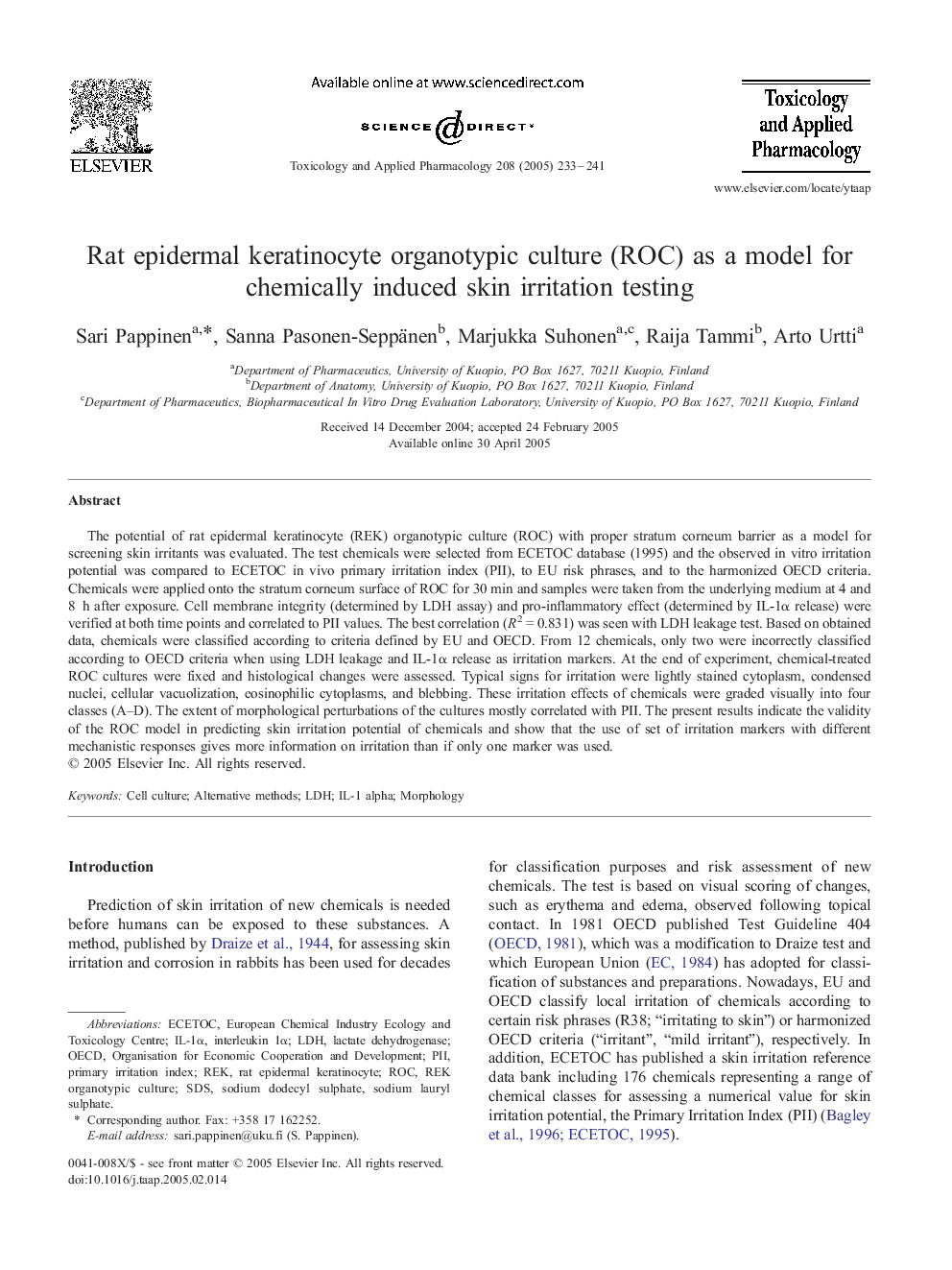| Article ID | Journal | Published Year | Pages | File Type |
|---|---|---|---|---|
| 9017819 | Toxicology and Applied Pharmacology | 2005 | 9 Pages |
Abstract
The potential of rat epidermal keratinocyte (REK) organotypic culture (ROC) with proper stratum corneum barrier as a model for screening skin irritants was evaluated. The test chemicals were selected from ECETOC database (1995) and the observed in vitro irritation potential was compared to ECETOC in vivo primary irritation index (PII), to EU risk phrases, and to the harmonized OECD criteria. Chemicals were applied onto the stratum corneum surface of ROC for 30 min and samples were taken from the underlying medium at 4 and 8 h after exposure. Cell membrane integrity (determined by LDH assay) and pro-inflammatory effect (determined by IL-1α release) were verified at both time points and correlated to PII values. The best correlation (R2 = 0.831) was seen with LDH leakage test. Based on obtained data, chemicals were classified according to criteria defined by EU and OECD. From 12 chemicals, only two were incorrectly classified according to OECD criteria when using LDH leakage and IL-1α release as irritation markers. At the end of experiment, chemical-treated ROC cultures were fixed and histological changes were assessed. Typical signs for irritation were lightly stained cytoplasm, condensed nuclei, cellular vacuolization, eosinophilic cytoplasms, and blebbing. These irritation effects of chemicals were graded visually into four classes (A-D). The extent of morphological perturbations of the cultures mostly correlated with PII. The present results indicate the validity of the ROC model in predicting skin irritation potential of chemicals and show that the use of set of irritation markers with different mechanistic responses gives more information on irritation than if only one marker was used.
Keywords
Related Topics
Life Sciences
Environmental Science
Health, Toxicology and Mutagenesis
Authors
Sari Pappinen, Sanna Pasonen-Seppänen, Marjukka Suhonen, Raija Tammi, Arto Urtti,
